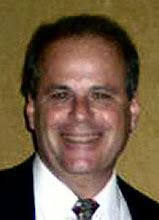Now showing within the Museum of Family History's Film Series, through April 18th:
Film no. 1:
Archival film from 1936 showing the Jewish district of Kazimierz in Krakow (3 mins, 26 secs). Most of these buildings can be visited today and are in a similar condition - only the people who walked those streets are long since gone.
The original [version] of this film is in the Polish film archives in ul. Chelmska in Warsaw. -- From YouTube.
Note that there is another version of this film on YouTube that states the film is of Kazimierz in 1938-9, not 1936.
This short film "The Jews of Krakow's Kazimierz District," can be found at www.museumoffamilyhistory.com/fs-krakow-kazimierz.htm .
Film no. 2:
From the exhibition "The Jewish Ghetto," coming to you at the Museum of Family History sometime in 2010:
"The Ghettos of Dąbrowa Górnicza and Będzin" (10 mins, 51 secs):
A film in two parts, shot in the ghettos of Dąbrowa Górnicza and Będzin, probably at the beginning of the ghettos.
Dabrowa Górnicza is part of the Katowice conurbation. Jews settled in Dąbrowa Górnicza in the middle of the 19th century. There were 4,304 Jews living in Dąbrowa Górnicza according to the 1921 census (11% of the total population).
The German army captured Dąbrowa Górnicza on 3 September 1939. In the fall of 1940 several hundred young Jewish men were deported to slave labor camps in Germany. Several hundred more were deported in the course of 1941. At the end of that year a ghetto was established. On 5 May 1942, the first deportation took place in which 630 Jews were taken to Auschwitz and exterminated. In the second deportation, conducted on 12 August 1942, another few hundred Jews were sent to their death in Auschwitz. On 26 June 1943, the ghetto in Dąbrowa Górnicza was liquidated and all its inmates were transferred to the ghetto in Srodula (a suburb of Sosnowiec), the only ghetto still existing in Upper Silesia. It too was liquidated and all its inhabitants, including the Jews from Dąbrowa Górnicza, deported to Auschwitz and killed.
According to the 1921 census, there were 17,298 Jews in Będzin or 62.1 percent of its total population. By 1938, the number of Jews had increased to about 22,500.
Situated close to the border, Będzin was quickly captured by the Wehrmacht. On 7 September, persecution of the Jews began, with the instituting of economic sanctions. On 8 September, the Będzin synagogue was burned, and the first massacre of local Jews took place.
The ghetto was founded in May 1942 but deportations had started as early as October 1940. Despite cooperation with the occupiers as is shown in this film, several large deportations took place in 1942. The last major deportations took place in 1943: 5,000 were deported on 22 June 1943 and 8,000 around 13 August 1943. About 1,000 remaining Jews were deported in the subsequent months. A rising took place in August 1943 which was put down and the ghetto was eliminated.
This film is held in the Polish film archive in ul. Chelmska, Warsaw. -- From YouTube.
The film can be found at www.museumoffamilyhistory.com/fs-ghettos-dabrowa-gornicza-bedzin.htm .
Film no. 3:
Jolson sings in "Hallelujah, I'm a Bum!"
The film trailer.
"The picture, some persons may be glad to hear, has no 'Mammy' song. It is Mr. Jolson's best film and well it might be, for that clever director, Lewis Milestone, guided its destiny, and the supporting cast includes Frank Morgan, the beautiful Madge Evans, the pathetically comic Harry Langdon and that veteran of Keystone days, Chester Conklin. It is a combination of fun, melody and romance, with a dash of satire, all of which make for an ingratiating entertainment..."-- From the New York Times, Feb. 9, 1933.
Don't forget to visit the Museum's large Al Jolson exhibition titled "The Immortal Al Jolson" (and see and hear many more videos, not to mention more than forty sound clips) at www.museumoffamilyhistory.com/ajolson.htm .
Subscribe to:
Post Comments (Atom)




No comments:
Post a Comment